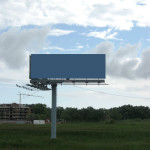 A New Jersey company recently waged a successful constitutional challenge to a municipal zoning ordinance banning digital billboards. The trial court agreed that the ordinance impermissibly curtailed commercial speech and, thus, violated the First Amendment to the U.S. Constitution.
A New Jersey company recently waged a successful constitutional challenge to a municipal zoning ordinance banning digital billboards. The trial court agreed that the ordinance impermissibly curtailed commercial speech and, thus, violated the First Amendment to the U.S. Constitution.
The Facts of the Case
The lawsuit centered on the proposed placement of a digital billboard in an M-2 industrial zone adjacent to I-287 in Franklin Township. While plaintiff E&J Equities was in the process of pursuing a variance for the billboard, Franklin Township passed a new ordinance regulating the placement of billboards. While conditionally permitting static billboards in the M-2 industrial zone, it prohibited digital/electronic billboards such as the one plaintiff sought to erect. After the Board of Adjustment of the Township denied the application, E&J Equities filed an appeal challenging the constitutionality of the ordinance, among other grounds. It alleged that the billboard ordinance violated E&J’s First Amendment rights through its unjustified limitation on commercial and non-commercial speech.
The Court’s Decision
The trial court agreed that banning digital billboards violated the First Amendment’s free speech protections. Therefore, the provision must be excised from the ordinance.
The court first determined that because the proposed billboard governs commercial speech, it was subject to intermediate scrutiny. Thus, the Township was required to “provide a legitimate government interest and a factual basis for the Ordinance demonstrating that it is narrowly drawn to advance that interest and is no more expansive than necessary in doing so.”
Under this analysis, the court found that the Township failed to provide a factual basis demonstrating that the ordinance’s ban on only digital/electronic billboards serves a legitimate government interest and is narrowly drawn to advance that interest. As highlighted in the court’s opinion, the Township’s planner acknowledged that, under the ordinance, it was likely that only one digital billboard would be permitted in this zone and that one digital billboard was not likely to have any greater impact on Township aesthetics than a static billboard. The court also pointed to evidence supplied by the plaintiff that the billboard would emit the same or less luminosity than a static billboard and would have minimal visual impact on surrounding residential properties.
The court also found that the Township’s conceded that the effect of digital billboards, a new technology, on traffic safety was still uncertain at this time and therefore there was an insufficient basis to uphold a ban based on traffic safety grounds. As the court noted, “(t)echnological advancement would undoubtedly reach a chilling halt if new and progressive technology were prohibited from use because its effect remained unknown.” The court also pointed out that the New Jersey Department of Transportation, which is charged with advancing traffic safety, had issued a permit for this billboard along the state highway.
Finally, the court concluded that a total ban on digital billboards was more expansive than necessary to protect the Township’s interests. Rather than place an absolute ban on digital billboards, the Township could have placed “restrictions on letter height to width ratio size and font, luminosity, light spillage and message length, as well as other bulk and design standards.”
As the court noted, “such restrictions could have eliminated any potentially negative impact on aesthetics or traffic safety.”
As of this writing, the Township is requesting a stay on the ruling. Notwithstanding the court’s finding that the ordinance was unconstitutional, the court upheld the Board of Adjustment’s denial of the variance, on the grounds that the Board had to act pursuant to the ordinance in effect at the time. However, with the ordinance now found invalid, the Township may seek to amend the ordinance in a fashion that is consistent with the court’s opinion but still gives the Township some regulatory control over the billboard, because otherwise the applicant may be able to proceed to the Planning Board with a site plan application.
For more information about this case or the legal issues involved, we encourage you to contact a member of Scarinci Hollenbeck’s Public Law Group.
